Four Men and a Prayer
Brief Synopsis
Cast & Crew
John Ford
Loretta Young
Richard Greene
George Sanders
David Niven
C. Aubrey Smith
Film Details
Technical Specs

Synopsis
Colonel Loring Leigh is dishonorably discharged from the British Army for issuing an order to Captain Douglas Loveland to remove the Lancers guarding a mountain pass in India, which allowed munitions to be brought to a tribe who then attempted a revolt that cost ninety lives. He cables his four sons, Rodney, a student at Oxford, Wyatt, a London barrister, Chris, an aviator and playboy, and Geoffrey, an attaché at the British Embassy in Washington, to meet him at home. As Colonel Leigh is preparing to talk with his sons about the order, which was forged by someone working with a munitions syndicate, he is shot by an assailant who steals his papers. Rodney and Wyatt travel to India to question Mulcahay, the colonel's batman, and learn that the arms came from Muros Island in South America. Chris goes to Buenos Aires to interview Loveland, who has retired there. After Lynn Cherrington, a rich American who fell in love with Geoffrey in Washington, turns up at Leigh Hall, Captain Drake, who has evidence for Geoffrey, is murdered. Geoffrey goes to Buenos Aires, while Lynn, who knows Loveland, secretly arrives there before Geoffrey, and Chris falls in love with her. She flirts with Loveland, who does not know that Geoffrey and Chris are Colonel Leigh's sons, and gets him to invite them on a trip up river on the yacht of Furnoy, a rich American. At Marlanda, Lynn witnesses the militia massacre a group of rebels and learns, after Loveland is shot while confessing the forgery to Geoffrey and Chris, that her father is the president of Atlas Arms, which provided munitions to both the militia and the rebels in Marlanda, and to the rebels in India. Although Geoffrey believes Lynn to be untrustworthy, she arranges a meeting between the four brothers and her father in Alexandria, Egypt, where he professes that he knew nothing about the murders, but suspects Furnoy, who is in charge of Atlas' operations. Geoffrey and Lynn are reconciled, and the brothers swim to Furnoy's yacht, which is about to leave. After a struggle in which Rodney is shot in the arm, they make Furnoy sign a confession. Finally, they meet with the king, who restores the colonel's good name and gives them his medal.

Director
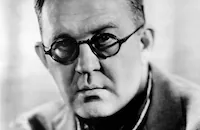
John Ford
Cast

Loretta Young

Richard Greene

George Sanders

David Niven

C. Aubrey Smith

J. Edward Bromberg
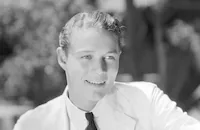
William Henry

John Carradine

Alan Hale
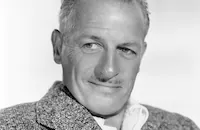
Reginald Denny
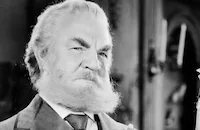
Berton Churchill

Barry Fitzgerald
Claude King

Cecil Cunningham
Frank Dawson
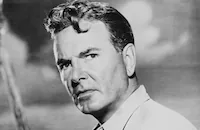
John Sutton

Lina Basquette
Frank Baker
William Stack
Harry Hayden
Will Stanton
Winter Hall
John Spacey
C. Montague Shaw
Lionel Pape
Paul Mcvey
Manuel Paris
Frank Lackteen
Noble Johnson
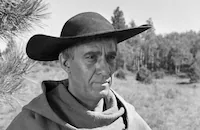
Martín Garralaga

Fred Malatesta

Brandon Hurst
Cansino Family
George Mendoza
Chris Pin Martin
Selmer Jackson
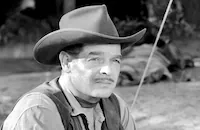
Robert Lowery
Patrick X. Kerry
Cyril Mclaglen
Tom Ricketts
Eddie Abdo
Jamiel Hasson
George Regas
Francesco Maran
Vesey O'davoren
Douglas Gordon
Michael Field
Barbara Denny
Ruth Clifford
Mimi Doyle
Muriel Sharada
June Gale
Helen Ericson
Crew
Dave Anderson
Donald Anderson
Madge Boyd
Harry Joe Brown
J. J. Burnett
Glenn Cooper
Glenn Delfino
Tom Dudley
Ed. Ebele
Walter Ferris
Walter Fitchman
Arthur Gaunt
Frank B. Gompert
Charles Graham
W. C. Grefrath
Robert Guggenheim Jr.
Les Haas
Ralph Hammeras
Roger Heman
Bernard Herzbrun
Sam Kaufman
Charles King
Sonya Levien
Bert Levy
Thomas Little
Captain Harry Lloyd-morris
Louis Loeffler
Kenneth Macgowan
Robert Mack
Bud Mautino
Bernard Mceveety
Bob Mclaughlin
Tom Morrissey
William Murphy
Ed O'fearna
Carrie O'neil
Waldo Ong
Ernest Palmer
Austin Parker
David Preston
Royer
Richard Sherman
J. L. Siegler
Louis Silvers
Wingate Smith
Rudolph Sternad
Meta C. Sterne
Wallace Sullivan
Pepi Torres
C. W. Turner
Anthony Ugrin
E. Clayton Ward
Walter Whaley
Louis J. Witte
Darryl F. Zanuck

Film Details
Technical Specs

Articles
Four Men and a Prayer
Ford missed out by not seeing Four Men and a Prayer; by no means a major work, it nevertheless features a few standout sequences, the film debut of actor Richard Greene, and a Ford trademark: a scene-stealing cast of strong supporting players. The plot is an atypical mystery yarn, set in the Four Feathers world of British Colonialism. Colonel Loring Leigh (C. Aubrey Smith) of the British Indian Army seems to have issued an order that cost the lives of a platoon of soldiers. Discharged, he returns home and sends for his sons, Oxford student Rodney Leigh (William Henry), barrister Wyatt Leigh (George Sanders), military pilot Christopher Leigh (David Niven), and diplomat Geoffrey Leigh (Richard Greene). The family reunites and the Colonel suspects that he was framed by an arms syndicate that is supplying weapons to the revolt. Almost immediately the elder Leigh is found dead, an apparent suicide. To clear their father, the four sons split up to search for evidence; Wyatt and Rodney investigate in India, while Geoff embarks for Buenos Aires, followed by his ambitious sweetheart Lynn Cherrington (Loretta Young).
In their review of Four Men and a Prayer, Time Magazine took the film's producer to task for making light of global arms trade, saying "Zanuck can excuse the world munitions ring for any atrocity except an affront to British family honor." The reviewer singles out the film's startling action scene highlight, saying "by thrusting Hollywood's dreamiest-eyed glamour girl [Young] smack up against a methodical machine-gunning of a screaming mass of helpless men and women, Director Ford shows modern war technique in outlines no cinemagoer can fail to comprehend. When, after that, the film attempts to whitewash the munitions industry, it succeeds only in getting itself all messed up."
In Searching for John Ford: A Life, Joseph MacBride calls Four Men and a Prayer, "...an unabashed potboiler [in which] Ford's directorial touch is visible only fitfully..." He goes on to observe that "the only sequences that do seem to engage Ford's feelings ...are those of the sons' reunion with their elderly father and their discovery of his sudden, mysterious death. The homecoming of Colonel Loring Leigh's four sons from around the world after the old man's unjust dismissal from military service has the feeling of a premature Irish wake, mourning and celebrating the importance of their long-distant father as a motivating force in their lives."
Ford later talked of his contract assignments, saying "you make pictures that you don't want to make, but you try to steel yourself, to get enthused over them. You get on the set, and you forget everything else. You say these actors are doing the best they can. They also have to make a living. As a director I must help them as much as I can." The director certainly helped employ some notable actors in Four Men and a Prayer; aside from the top-billed players, film fans can spot several familiar faces, including John Carradine, Alan Hale, Reginald Denny, and Barry Fitzgerald.
When faced with "a job of work," Ford was apt to amuse himself on the set by pulling pranks on his players. He found a convenient victim in the person of British actor David Niven. As Niven recounted in his autobiography The Moon's a Balloon, the director pulled him aside at the end of shooting one day and told him that, as he wouldn't be needed the following day, he should go out that night and get drunk. Feeling this would please the hard-drinking director, Niven promptly went out and reported the next day "very drunk indeed and thinking how pleased John Ford would be. We were rehearsing the first scene. All I had to do was bind up the arm of George Sanders, who had been shot." Ford stopped and said "What's the matter with you Niven? Why don't you stand still?" Ford called producer Zanuck to the stage, and with cameras rolling, had Niven do a take of the scene, in which he was to pull a stethoscope out of the pocket of his white medical coat and open a box to take out a dressing for the wound. Ford had replaced the props, however, and when Niven's cue came, "...I put my hand in the pocket for the stethoscope and pulled out a large snake. Trying manfully to continue the scene, I dropped it on the floor and opened the first-aid box. When I saw it was full of little green turtles, I let out a yell and flung it in the air." Ford called, "Print it!" and the gag blooper was a long-time favorite in the studio's projection room.
Producer: Darryl F. Zanuck
Director: John Ford
Screenplay: Richard Sherman, Sonya Levien, Walter Ferris, William Faulkner, based on a novel by David Garth
Cinematography: Ernest Palmer
Film Editing: Louis Loeffler
Art Direction: Bernard Herzbrun, Rudolph Sternad
Costume Design: Royer
Music: Louis Silvers
Cast: Loretta Young (Miss Lynn Cherrington), Richard Greene (Geoffrey Leigh), George Sanders (Wyatt Leigh), David Niven (Christopher Leigh), C. Aubrey Smith (Col. Loring Leigh), John Carradine (Gen. Adolfo Arturo Sebastian), J. Edward Bromberg (Gen. Torres), Alan Hale (Mr. Furnoy), Reginald Denny (Capt. Douglas Loveland), Barry Fitzgerald (Trooper Mulcahay).
BW-85m.
By John M. Miller

Four Men and a Prayer
Quotes
Trivia
The line "I knew a man named Trubshawe..." refers to a lifelong friend of Niven's, a source of references or character names in several of his films.
Notes
The novel was originally serialized in Hearst's International-Cosmopolitan (Sep 1936-January 1937), and the motion picture rights were purchased by Twentieth Century-Fox in May 1936, before the novel was published. According to information in the Twentieth Century-Fox Records of the Legal Department at the UCLA Theater Arts Library, William Faulkner was assigned as a writer to this film for a short time, but he merely read the script and did no writing. According to a Hollywood Reporter news item, early in January 1938, Darryl Zanuck increased the budget for the production, and it was to be made "on a road-show scale." This was the first film of Richard Greene, an English stage actor, who was described in Variety as "a good-appearing youth of the Robert Taylor-Tyrone Power type." According to a Hollywood Reporter news item, Douglas Fairbanks, Jr. was originally signed for the lead. A pre-release Motion Picture Herald news item noted that "Darryl F. Zanuck is giving the film his personal attention." According to contemporary sources, the roles of Lionel Pape, Brandon Hurst, George Regas, Selmer Jackson and Francesco Maran May have been cut prior to the film's release. Director John Ford, in an interview published in a modern source, stated "I just didn't like the story, or anything about it, so it was a job of work." According to the legal records, some scenes were shot at Franklyn Canyon and Municipal Airport, in Los Angeles. In 1948, Twentieth Century-Fox released another film based on the same source, entitled Fury at Furnace Creek, which was directed by Bruce Humberstone and starred Victor Mature.














